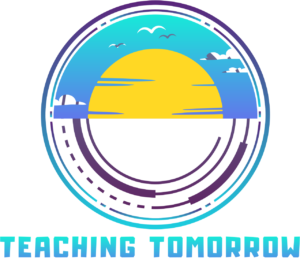
In the ever-evolving landscape of education, curriculum development stands as a cornerstone for effective teaching and meaningful learning experiences. The art of crafting a well-structured curriculum holds the key to unlocking the full educational potential of students. In this blog, we will delve into the world of curriculum development, exploring its components, the steps to master it, adapting it to diverse learning needs, and its role in shaping the future of education.
1. Understanding Curriculum Development:
Curriculum development refers to the deliberate and systematic process of designing educational plans and materials to guide teaching and learning. Its significance lies in its ability to create a roadmap for educators, ensuring that learning objectives are met while engaging students effectively.
2. Key Components of Effective Curriculum Development:
- Learning Objectives and Outcomes: Clearly defined learning objectives outline what students should be able to accomplish by the end of a course. They act as guideposts for both teachers and learners.
- Content Selection and Organization: Carefully curating relevant content and organizing it in a logical sequence enhances the flow of learning and helps students grasp complex concepts.
- Teaching Strategies and Methods: Choosing appropriate teaching methods and strategies based on educational goals and student preferences fosters engagement and retention.
- Assessment and Evaluation Techniques: Designing varied assessments aligning with learning objectives ensures comprehensive evaluation of student progress.
3. Steps to Master Curriculum Development:
- Needs Assessment and Goal Setting: Identify the educational needs of your students and set clear goals for what you want them to achieve.
- Content Research and Alignment with Standards: Thoroughly research the subject matter and align it with educational standards and guidelines.
- Sequencing and Pacing of Content: Arrange the content logically, considering the progression of difficulty and the appropriate pace for learning.
- Designing Assessments to Measure Learning Outcomes: Develop assessments that effectively evaluate whether students have achieved the intended learning outcomes.
- Incorporating Interactive and Engaging Activities: Integrate interactive activities, discussions, and projects that promote active learning and critical thinking.
4. Adapting Curriculum to Diverse Learning Needs:
Recognizing that every student learns differently is essential. By offering various instructional approaches, such as visual, auditory, and kinesthetic methods, educators can cater to different learning styles. Moreover, technology can be harnessed to provide personalized learning experiences, ensuring inclusivity and accessibility for all students.
5. Staying Updated with Educational Trends:
As education evolves, curriculum development must keep pace. By integrating new educational trends like flipped classrooms, project-based learning, and online resources, educators can create more relevant and engaging curricula. Staying informed about these trends ensures that the curriculum remains current and effective.
6. Case Studies of Successful Curriculum Development:
- Project-Based Learning in High School Science: Explore how a high school science teacher integrated project-based learning into the curriculum, leading to deeper understanding and enthusiasm for the subject.
- Personalized Math Curriculum for Elementary Students: Discover how an elementary teacher tailored math instruction to individual student needs, resulting in improved performance and confidence.
7. Overcoming Challenges in Curriculum Development:
- Limited Resources: Seek creative solutions like leveraging open educational resources or collaborating with other educators.
- Conflicting Stakeholder Interests: Maintain open communication with stakeholders to address concerns and find common ground.
- Time Constraints: Efficient planning and prioritization can help manage time constraints effectively.
8. The Future of Curriculum Development:
The future of education is likely to see a shift towards personalized and competency-based learning. Curricula will be designed to cater to individual student strengths, interests, and needs. Interdisciplinary approaches will become more prevalent, bridging gaps between traditional subjects and real-world applications.
9. Tips for Aspiring Curriculum Developers:
- Continuously seek professional development opportunities to refine your curriculum development skills.
- Collaborate with fellow educators to share insights and best practices.
- Embrace innovation and experimentation to keep your curriculum fresh and engaging.
Takeaway
Mastering the art of curriculum development is an endeavor that holds immense potential to transform education. By understanding its key components, following a systematic process, adapting to diverse learning needs, and staying current with educational trends, educators can create curricula that inspire and empower students. As we gaze into the future of education, the role of curriculum development stands as a guiding light, leading us toward a more effective and impactful teaching and learning journey.





